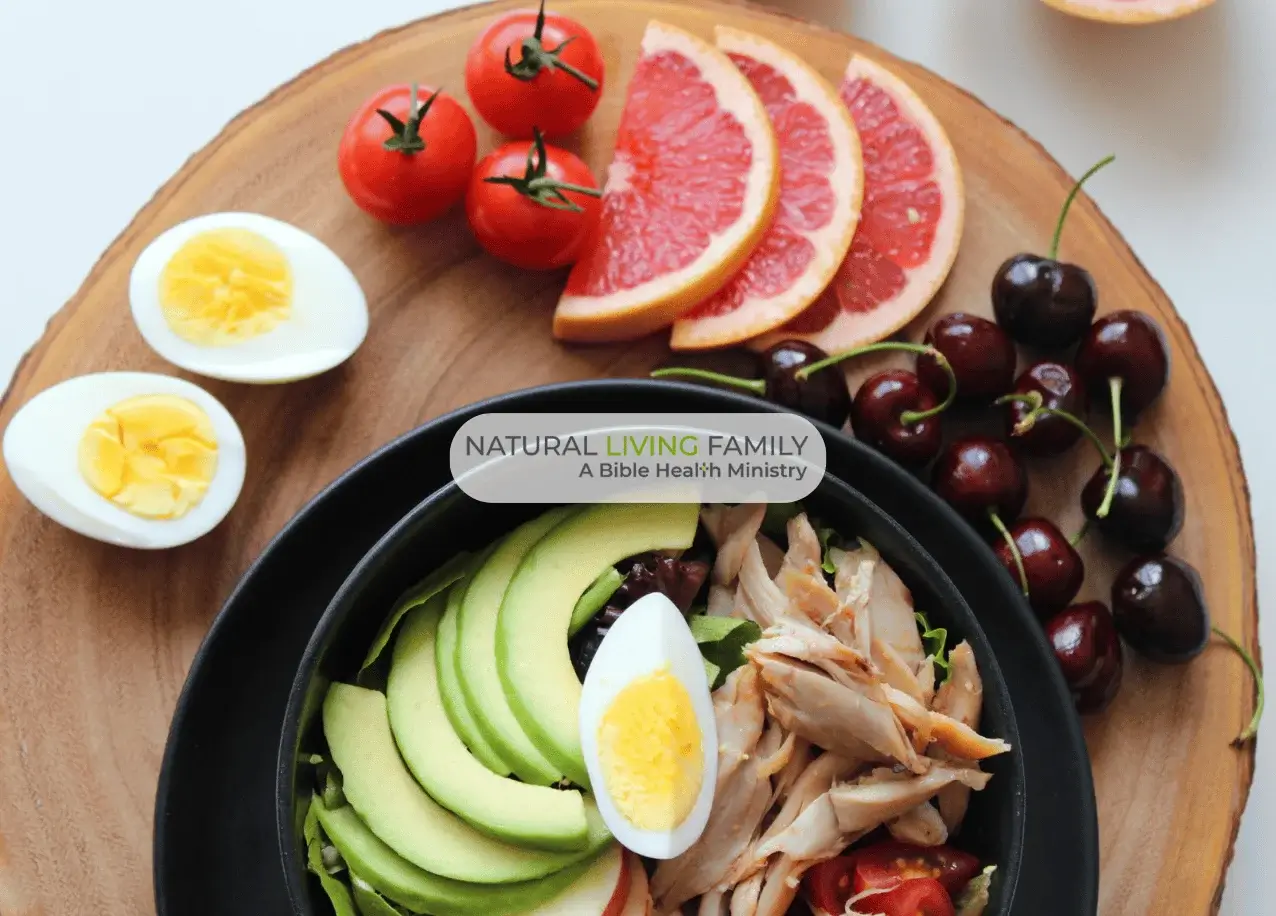Specialty diets are front and center at the moment. You can’t even go online without seeing a friend, family member or acquaintance rave about the latest fad diet. It seems that the way for modern diets to gain popularity is to vilify an entire food group such as nightshade vegetables.
Table of Contents
Why Would Anyone Avoid Nightshades?
Whether it is cutting out gluten, no processed sugar, no grain, no meat, or some combination of them all, it’s difficult to avoid an entire food group altogether.
Another common diet cuts out the nightshade vegetables, which have been linked to autoimmune diseases. So what’s left to eat? Well, at the end of the day, the truth is almost as mysterious as the diets themselves.
The fact of the matter is this: Everyone has a different reaction to various plants in the nightshade family, which means that it’s not always necessary to eliminate all nightshade vegetables. And before you just shrug your shoulders and say, “A vegetable is a vegetable,” let’s take a look at the nightshade vegetable family as a whole.
In order to fully understand the positive and negative effects that nightshades can have on us, we will look at their individual compositions. Ultimately, you must make your own decision on whether to include nightshade vegetables in your diet.
Defining Nightshade Vegetables
Containing more than 2,000 different species of plants, the Solanaceas plant family is home to nightshade vegetables. The family goes well beyond vegetables and includes, poisonous herbs, such as belladonna, and innocuous flowers, such as morning glories. Even some trees are included in the nightshade family.
But nightshade vegetables are an important enough part of the Solanaceae plant family that it is often unofficially referred to as the “potato family” or “tomato family.” We will dig a little deeper into exactly what vegetables are nightshades in just a moment, but here are the four major edible members.
It should be obvious from this short list alone that the nightshade vegetable family offers a wide variety.
Components Found in Nightshades
While at first glance these vegetables may not seem related, all nightshade vegetables share a few basic similarities. The first similarity is the presence of calcitriol, alkaloids, and other components.
1. Calcitriol and Alkaloids
Calcitriol is a hormone derived from a specific type of vitamin D3 that is common in nightshade vegetables. The overproduction of calcitriol is connected to vascular calcification. (1) By injecting lab rats with calcitriol, scientists have been able to induce calcinosis in soft tissue.
Calcinosis is the irregular deposits of calcium salts on certain tissues in the body. However, overdoses of Vitamin D are not normal. (2) The real excess of vitamin D3, ending in calcitriol and the calcification of vascular and soft tissues, has yet to be seen but is still worthy of pointing out nonetheless.
Alkaloids, on the other hand, are mostly identified via a ring and a single nitrogen atom that comes from amino acids, however, this compound is flexible. Alkaloids are famous for being the riskiest, yet strongest structures in herbal medicine. A few of the more notable alkaloids in the nightshade family include:
- Tropane
- Nicotine
- Capsaicin
- Solanine
But while tropane alkaloids are common in plants of the nightshade family, they are not always in nightshade vegetables. (3) So for the purpose of this article, we will focus on the other three, which are often found in nightshade vegetables.
2. Nicotine
It just so happens that nicotine, which as we all know is found in tobacco, is a nightshade. Fortunately, most people know the harmful effects of nicotine, so we don’t need to spend too much time on this subject.
However, just because you avoid tobacco doesn’t necessarily mean you are avoiding nicotine. Nicotine is actually present in most nightshade vegetables, and there are many who blame nicotine on our country’s addiction to French fries and ketchup. (4)
3. Capsaicin
An active ingredient in hot peppers, capsaicin is most famously known for its anti-inflammatory agents. But don’t forget that it’s still an alkaloid and alkaloids are among the strongest compounds in herbs and other foods. I mean, just eat a habanero or ghost pepper if you want to experience a taste of the irritation alkaloids can ignite. It is a lot more than just taste that causes your lips to burn when eating hot salsa.
In fact, the result of capsaicin’s irritants is a release of what’s known as Substance P. Substance P is a neuropeptide and it is integral in communicating pain messages to the brain.
After the initial pain that results from contact with capsaicin, there is a numbness-like sensation. This is why your third and fourth bites of pepper are not as hot as the first. (5) It is this reaction chain that makes capsaicin a great topical analgesic for osteoarthritis. (6)
4. Solanine
Known as a glycoalkaloid, the last alkaloid to discuss is solanine, a steroid alkaloid that has merged with a sugar. As the body metabolizes solanine, the sugar is removed and we’re left with solanidine. And while this chemical is not toxic in the small doses found in nightshade vegetables, the body is able to store solanidine, which is released when the body is under stress.
While solanine is mostly found in potatoes, its counterpart, tomatine, is found in tomatoes. Both of these steroid alkaloids are made in a similar way to chlorophyll, meaning the green portions of the plants contain higher concentrations.
Even if you don’t plan on eating potato leaves, this is important information, because green spots on potatoes and, yes, even fried green tomatoes, can contain elevated levels.
Nightshade steroids, such as solanine, will irritate the gastrointestinal system and, by acting as acetylcholinesterase inhibitors, interrupt neurotransmitters. (7) While true solanine poisoning is rare, research shows that severe vomiting and diarrhea, depression of the central nervous system, and death are all possible outcomes. (8)
Allergic Reactions to Nightshades
Nightshades cover a far-reaching spectrum from deadly plants to yummy vegetables. It’s important to note that not all the negative aspects of nightshades are present in every nightshade plant. And for those that do contain harmful elements, they are typically too weak to have any real impact.
However, nightshade allergies, while difficult to pinpoint, do exist and they must be taken seriously. Most allergies are pretty simple to spot – I am thinking about nut allergies and dairy allergies, specifically.
But since nightshades are not noticeably related to each other, allergies can be difficult to diagnose. When allergy symptoms are present, consider including nightshades in your elimination diet and allergy tests to be fully certain.
Symptoms of nightshade allergies are similar to gluten sensitivities. Symptoms commonly associated with nightshade vegetable allergies include irritable bowel syndrome and other gut health issues, heartburn, joint pain, and nerve sensitivity.
In 2002, researchers looking at gut permeability wanted to see how nightshades influence irritable bowel syndrome (IBS). The study used potatoes, which, as you might remember, contain glycoalkaloids. It was discovered that existing cases of IBS were aggravated in mice when nightshades were introduced. (9)
It is not surprising that heartburn and acid reflux are common reactions associated with nightshade vegetables, especially considering capsaicin. We know that capsaicin is tied to issues, such as acid reflux, and has the ability to irritate the lining of the esophagus and stomach. (10) For the most part, it is possible to treat these symptoms by simply limiting capsaicin ingestion, but a true allergy will demand elimination.
While there is no real evidence of nightshade vegetables’ ability to cause arthritis, there is some anecdotal evidence that should not be taken lightly. (11) Joint pain is a common side effect of nightshade vegetable allergies.
Researchers don’t know why nightshade vegetables contribute to pain, but several theories exist. For example, some hypothesize that it’s the vitamin D3 and calcitriol that work to calcify soft tissue while others say nightshades impact the neurotransmitters and pain receptors.
What Foods Are Nightshade Vegetables?
If you’re thinking about including nightshade vegetables in your elimination diet, you must be thorough. When you include the non-edible varieties, there are more than 2,000 different species of nightshade vegetables.
In addition, some common store-bought products will use derivatives of nightshades. Here is a list of common nightshade vegetables that can help you get started on your elimination diet:
- Capsicum
- Cayenne pepper
- Eggplant
- Goji berries
- Gooseberries
- Ground cherries
- Okra
- Paprika
- Pepino melons
- Peppers
- Sorrel
- Tobacco
- Tomatillos
- Tomatoes
- White potatoes
One thing to note is that huckleberries, goji berries, and blueberries all contain alkaloids. While they are not part of the nightshade family, they should be included in the foods to avoid if you’re going to follow the elimination diet. Also, be on the lookout for anything that contains potato starch, which is usually used as a filler. This includes baking powders, medications, and, yes, even envelope glue. Yuck.
You should allow about three months for the elimination diet to be successful before adding foods back in. This is because solanine can be stored in the body for weeks or months. Here are a few substitute foods you can eat in the meantime:
- Black Pepper
- Cauliflower
- Celery
- Grapes
- Melon
- Mushrooms (Try this mushroom coffee if you don’t like eating mushrooms.)
- Oranges
- Radishes
- Sweet potatoes or yams
- White pepper
Obviously, there’s nothing universally dangerous about nightshade vegetables. In fact, quite a few of them actually carry real health benefits. You shouldn’t cast out all alkaloid mixtures, especially capsaicin and nicotine, which are effective disease fighters. (12)
But when symptoms of nightshade allergies do occur, elimination is your best bet. This will give your body the time it needs to recover and save you from great pain and/or discomfort while you heal your gut issues.
References:
- https://pubmed.ncbi.nlm.nih.gov/8698544/
- http://www.lef.org/Magazine/2010/9/Vitamin-D-K-Healing-cream-Food-sensitivities/Page-01
- https://efsa.onlinelibrary.wiley.com/doi/abs/10.2903/j.efsa.2013.3386
- https://pubmed.ncbi.nlm.nih.gov/10552617/
- http://www.sciencedirect.com/science/article/pii/S0014299913008200
- https://pubmed.ncbi.nlm.nih.gov/24941673/
- https://en.wikipedia.org/wiki/Acetylcholinesterase_inhibitor
- https://www.ncbi.nlm.nih.gov/pmc/articles/PMC1597169/?page=2
- https://pubmed.ncbi.nlm.nih.gov/12479649/
- https://pubmed.ncbi.nlm.nih.gov/10632656/
- http://www.webmd.com/arthritis/features/arthritis-diet-claims-fact-fiction
- https://pubmed.ncbi.nlm.nih.gov/23661325/











